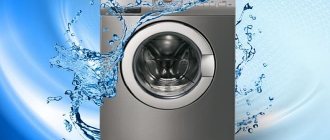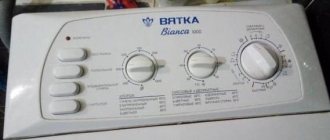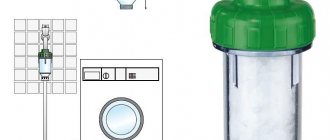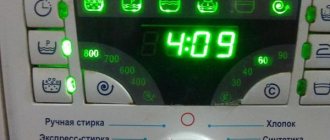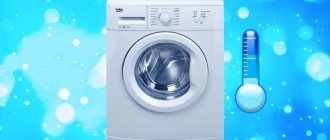Our health is greatly influenced by external factors. Especially water, since you need to drink 2 liters per day. Water, which has a large number of impurities, has a negative effect on the human body, hence various diseases. Most often people face the problem of exceeding water hardness. In large cities, such as Moscow, for example, residents often wonder what kind of water flows from their tap: hard or soft? Let's try to sort this issue out.
What does hard water affect?
Everyone knows that a person needs to drink about 2 liters of water a day, however, with constant interaction with hard water, people began to notice that it adversely affects their health. This issue is very acute in large cities, since a larger population lives there.
Previously, it was believed that it was enough to simply boil tap water, and the negative properties of hard water would lose their effect. But more and more often, people are demonstratively expressing distrust towards local housing and communal services regarding the quality of water, as they notice negative impacts on its part.
How does such water affect the human body? Firstly, drinking hard water leads to the formation of kidney stones. This is due to the fact that due to impurities in the water, the excretory system is forced to filter them on its own. Because of this, the salt balance of the body is disrupted, that is, salts do not have time to leave the body along with urine.
Secondly, this water accelerates the aging process, as it greatly dries the skin, depriving it of necessary moisture. Also, due to hard water, rashes and irritations are common. And the last point is that hair and nails suffer from such liquid.
In addition to the negative impact on human health, our washing machines, dishwashers and sinks also suffer. When considering washing machines, we can say that in hard water, various detergents are less effective. They don't foam well and are less effective at removing dirt. Also, due to this water, salts accumulate on the drum of the machine, which leads to rapid breakdown.
Indicators to check
The standards are determined by SanPiN 2.1.4.1074-01, which provides a complete list of which indicators must be checked by Mosvodokanal employees. Main norms:
- Acidity.
- Rigidity.
- pH level.
- Chroma.
- Live bacteria.
- The presence of third-party substances, including fluorides, chlorides, nitrates, nitrides.
- Transparency level.
- Residual chlorination.
- Smell.
It is mandatory to study all the indicators that are given in the “Sanitary Norms and Rules”. This is necessary in order to establish the quality of water and detect harmful and dangerous substances, bacteria, and microbes.
The World Health Organization has established the following indicators for drinking water:
- Calcium – from 20 to 80 mg/liter.
- Magnesium – from 10 to 30 mg per 1 liter.
- Hardness – no recommendations for size.
In Moscow, when drawing up SanPiN 2.1.4.1074-01 and other documents regulating water quality, they adhere to WHO standards:
- Hardness – 7 F.
- Calcium – no standard value.
- Magnesium – no more than 50 mg per 1 liter.
Indicators for bottled water are separately defined, which are specified in “Sanitary Rules and Standards 2.1.4.1116-02”:
- Calcium – from 25 to 130 mg per 1 liter.
- Hardness – from 1.5 to 7 F.
- Magnesium – from 5 to 65 per 1 liter.
The composition of impurities in water depends on the season, which is especially reflected in surface waters - rivers, lakes, and reservoirs. Significant changes occur in spring and autumn, when floods occur. The concentration of impurities is also determined by summer and winter low water periods.
Often in Moscow, water quality deteriorates due to changes in the content of aluminum, ammonium, hardness, and oxidability. These indicators may exceed the norm due to the characteristics of the technological process and water treatment methods.
Iron, manganese, color and odor data often go beyond the normal range. The deviation from the norm in this case is due to the deterioration of the water supply networks, which depends on the management company, which is obliged to deal with specific water supply communications.
Water pollution is determined not only by equipment and the natural characteristics of water at different times of the year, but also directly depends on biological sources. Landfills, leaking sewers, and abandoned wells are excellent places for pathogens to live and operate. If there are oil refineries, factories, factories and other enterprises near the sources, as well as radioactive waste, then the condition of drinking water deteriorates several times.
Optimal stiffness parameters
If we take water hardness and units of measurement, then at the moment in Russia the hardness parameters are treated less strictly than in Europe. Water with 3.6-4 mEq/l is already considered hard in Europe, while in our country it is still classified as soft. We generally consider soft water to have a hardness of 0 to 4 mEq/l.
Water with medium hardness is called a liquid with values from 4 to 8 mEq/l. Hard water is water with values from 8 to 12 mEq/L. Anything over 12 is very hard water.
How to determine water hardness
It is very difficult to determine by touch whether water is hard or soft. The term “stiffness” arose because after washing fabrics lose their softness, wooliness or silkiness, and become unpleasantly hard to the touch. Weaving or knitting weaves, regardless of density, have a porous structure. Salts are added to the fibers, which makes things rougher, tougher, and denser after washing.
You can determine water hardness both in the laboratory and at home. The presence of hardness salts can be determined visually:
- The drinks have an unpleasant bitter taste.
- Teas take longer to brew than usual.
- When cooked, the meat becomes unpleasantly tough.
- Salt deposits are noticeable on the walls of the dishes.
- A large amount of scale forms on the appliances.
- A whitish residue remains on the hair after washing and on the comb.
- Soap and powder do not foam well, and their consumption increases during washing.
Increased hardness of drinking water can cause damage to health and heating appliances. Without knowing the exact salt concentration indicators, it is difficult to calculate the dose of anti-scale agents for washing and drying units or program a coffee machine for cleaning. It is difficult to ensure a comfortable life for fish in an aquarium or to choose the right cleaning filters. In addition to visual assessment, it is better to use more accurate measuring methods for determining the hardness of drinking and industrial water.
Water hardness measurement
Before consumption, before watering the garden, before supplying water to pipelines or before technical use of water for production processes, it is useful to check for the presence of hardness salts. Such a check will eliminate consumer claims against water supply companies and extend the life of expensive industrial equipment.
To measure water hardness, household and professional instruments are used:
- Medical strips sold in pharmacies give good results with an accuracy of 1-2°F.
- Express tests for an aquarium allow you to monitor the water supply to containers with aquatic inhabitants or check solutions intended for watering plants.
- Salinity meter, spectrum analyzer, TDS and EC meter show salt content and other parameters: electrical conductivity, solution resistance.
It is helpful to order a test from a laboratory to obtain accurate results with supporting documentation. Then you don’t have to think about how to determine water hardness, you don’t need to buy measuring instruments or calculate indicators based on indirect parameters using formulas.
How to determine water hardness using the formula
You can determine water hardness using the formula. To determine the general indicators, you need to perform the following calculation:
Jo = [Ca2+] + [Mg2+] = (m(Ca2+))/(E(Ca2+) x V(H2O)) + (m(Mg2+))/(E(Mg2+) x V(H2O)),
Where:
[Ca2+]; [Mg2+] is the concentration of calcium and magnesium ions, in mEq/dm3;
m(Ca2+); m(Mg2+) - ion content in mg;
V(H2O)—volume of water, dm3;
E is the equivalent mass of ions* (its values have already been given in the text: Ca2+ = 20.04; Mg2+ = 12.16 mg/lil g/mol).
The calculated result is obtained in units: mg-eq/dm3.
Next, temporary or permanent stiffness is calculated. The calculated value is subtracted from Zh and the values of all three categories of J are obtained.
Carbonate FA is calculated using the formula:
Lc = [HCO3-] = (m(HCO3))/(E(HCO3) x V(H2O))
Non-carbonate: Zhk = Jo-Zhk.
Average values of water hardness in Moscow
Speaking about our capital, it is clear that the hardness of tap water in Moscow is on average 3-3.5 mEq/l. In the Central region, the average hardness reading is 3.2. In the north of Moscow 3.5. In the south around 3.4. In the west and east it is approximately 3.3. If you live in Moscow and want to know in more detail what hardness of water flows from your tap, then you can contact Mosvodokanal and ask them about it directly. They will be required to provide you with this information.
What kind of water do Muscovites drink?
Today, drinking water for household consumption by the population is taken from 2 sources. It is distributed between districts of the city. Thus, residents of the regions of the Southern Administrative District, Western Administrative District, South-Western Administrative District, North-Western Administrative District, left-bank water treatment points and the population of the near Moscow region drink water from the Moscow River, as well as from the water reservoirs of this area. This is the Moskvoretsky source of water consumption. The remaining four districts and right-bank water treatment points consume water from the Volga. This is the Volga source of water consumption.
An example of using a water map of Moscow and the region
Changes in water hardness throughout the year
For no reason, Mosvodokanal gives residents of the capital the right to find out the hardness of tap water in their apartments at any time. The composition of the water is variable, so they should be constantly monitored. There are quite a few reasons why this happens, however, noticeable changes occur when the season changes.
In the winter season, water reaches its peak hardness. It is during this season that household appliances that interact with water most often break down. In the spring, the water flowing from the taps in apartments softens greatly. This is caused by the fact that the snow begins to melt in the spring. After it melts, it flows into reservoirs in the form of water. Water processing enterprises pump out liquid from these reservoirs and, after filtration, send them directly to your home. In summer, the indicators hardly change at all. In autumn, due to heavy rains, the water is considered the softest.
Who is responsible for the capital's water?
Mosvodokanal JSC is responsible for the quality characteristics of water in Moscow. Here samples are taken every two weeks - if there are fewer than 10,000 people in the area. The larger the population, the more frequently samples are taken. Separate samples are carried out after repairs to water supply networks. Every citizen can make a request to this organization regarding the characteristics of water.
How to find out about water quality?
To obtain reliable and up-to-date information about water parameters at the address, you can go to the Mosvodokanal website. Here you need to enter the “Population” section, and then into the “Water quality in Moscow regions” subsection. Here you need to indicate your address, after a second the current value will be shown to the user.
Residents of the capital can monitor the condition of tap water online. All indicators are unstable and change dynamically, so you cannot rely on fixed indicators.
Not all Muscovites can track water supply parameters. The service described above is not available to people living outside the Moscow Ring Road. Therefore, they have to find out the degree of GI on their own - for example, with the help of hardness strips. This is a very convenient and quick way to determine - just dip the strip into the liquid being tested to get the answer.
What do the indicators depend on?
Most often, changes in indicators are associated with the time of year. The hardest water flows from taps during the cold season. It is during this period that dishwashers and washing machines are at greatest risk.
In spring, the water in the water supply is softer - thanks to melt and rainwater entering the general water system. In summer, the level changes depending on the circumstances, but in autumn the water is soft again due to heavy rainfall.
To accurately find out the concentration of hardness salts and other impurities in the water, it is better to send it to the laboratory for analysis. This is especially important if you are going to install a cleaning system in the cottage.
Knowing how soft or hard the water flows from the tap, the user can protect his dishwasher from the negative effects of salts. A correctly set hardness level will avoid the formation of scale and will extend the life of parts in contact with water and the entire device as a whole.
Which company is responsible for water quality in the capital?
Every Muscovite should know who is responsible for the water supplied to residential buildings. Different organizations are responsible for cold and hot water in Moscow. For questions about cold water, you should contact Mosvodokanal, for questions about hot water, contact the housing and communal services to which your house is attached.
The capital is divided into districts. Each district is served by a separate group of inspectors. Water measurements are carried out not only in residential buildings, but also in various public places: in catering establishments, in shopping centers. In total, observations are being made at about two hundred different points in the city.
Water suitable for drinking and irrigation
Based on SanPiN, water that contains water-soluble salts of no more than 0.4 g/cubic meter is considered suitable for irrigation. dm. The variation of this indicator is from 0.4 g/cu. dm up to 1g/cu. dm states that such water will be suitable for use in ground conditions. If the water contains salt from 1 to 3 g/cu. dm, then it can cause partial harm to plants and soil. If the indicator exceeds 3 g/cubic dm, then irrigation with such water can ultimately lead to salinization of the soil and the destruction of plants growing on it.
If we analyze tap water, which is most often used to irrigate the soil, we can come to the conclusion that such water is the most optimal for irrigation, since the salt content in it varies from 0.1 g/cu. dm up to 0.3 g/cubic. dm. This liquid is good for watering fruit, berry and vegetable crops.
Not all areas of the Moscow region have water suitable for drinking.
If you analyze drinking water in the Moscow region, it becomes clear that not in all areas of the Moscow region the water is clean and suitable for drinking. In the five areas listed above, the water does not meet SanPin norms and standards for drinking, but such water is considered quite normal for irrigating the soil and having a beneficial effect on land productivity. Excluding these five districts, we can say that in general the Moscow region has sufficient drinking water resources. That is why every year the Moscow region brings excellent results to the Russian treasury in the collection of grain and vegetable crops.
Minister of Agriculture of the Moscow Region Dmitry Stepanenko: “... Based on the results of 2015, the Moscow region turned out to be a leader in terms of yield indicators. More than 62,000 hectares of agricultural land were put into circulation. And as a result, the productivity of the Moscow region for the first time in the history of the development of the agricultural industry increased 16 times!
Dishwasher softeners
Softener filters BWT
BWT Dealers
There are a huge number of opinions about the need to have a dishwasher in everyday life.
However, this type of household appliance is not yet widespread enough in our everyday life. Housewives still believe that washing dishes by hand is better and faster. There is also another misconception that dishwashers are unreliable and often break down due to water hardness, although this problem is easily dealt with by dishwasher softeners .
Let's try to compare which method is more economical and profitable.
Methods for normalizing well drinking water
Water purification is the maximum removal from a liquid of all impurities that are harmful to human health. Despite the development of modern innovative technologies, it is difficult to come up with a device that could remove an excess of organic and inorganic substances from drinking liquid once or twice.
Current treatment facilities often cannot cope with impurities, and therefore, in order to guarantee greater safety for people, high concentrations of chlorine are created in the water. Chlorine is actually the most powerful oxidizing agent that oxidizes organic substances and destroys a lot of pathogenic bacteria
It is in water that this substance begins to enter into a chemical reaction with a huge amount of organic substances that are present in reservoirs and rivers, i.e. in those reservoirs from which water is withdrawn. Ultimately, even more harmful compounds of organic substances and chlorine are created in water than chlorine itself. That is why residents of the Moscow region smell chlorine when consuming water, while the water is not transparent and also does not have the most pleasant taste. For the most part, this effect occurs in places where treatment facilities have not been modified for a long time.
Biological contaminants
The cause of biological pollution is the penetration of various pathogens and bacteria into water. The sources of such pollution are places where dirty domestic and fecal water is filtered for a long time (cesspools, wells and wells, filtration zones, emergency sewerage networks, livestock yards). Violations of operational standards of water intake structures, as well as violations of the regime of sanitary protection zones of reservoirs, can play a role. Pollution can also penetrate “in company” with dirty river waters.
It must be understood that microorganisms often begin to develop more actively in aquifers than on the surface. Firstly, there are no natural disinfectants, such as solar ultraviolet radiation. Secondly, all conditions are created for the development of anaerobes, which are not active in open water bodies. Volokolamsk, Klimovsk, Lotoshino, Voskresensk, Chekhov, Vidnoye, Ozery, Lobnya, Yegoryevsk, Podolsk are considered the most unfavorable in terms of microbiological contamination of drinking water. This largely stems from the poor quality of the sanitary condition of the wells and equipment.
The “Clean Water in the Moscow Region” program can largely solve this problem, as it involves the construction or reconstruction of treatment and sewerage facilities. In the same Chekhov, within its framework, treatment facilities will be updated and a UV disinfection station for treated wastewater will be launched.
In Yegoryevsk there is a problem of unpleasant odor in water, associated with the presence of ferrous bacteria in the latter. These organisms become active with the onset of cold weather: the temperature of the water in the system rises when it gets cold outside, which leads to an increase in the activity of microorganisms.
Natural pollution
Groundwater in many areas of the Moscow region is excessively saturated with iron and manganese salts. This explains the unpleasant metallic taste, yellowish color and specific “iron” smell. For example, in the Minsk direction, the level of iron in groundwater is 4–5 times higher than the concentrations that hygienists allow in drinking water (GOST 2874–82 limits the iron content to 0.3 mg/l). Increased alkalinity is also observed (although according to the same GOST, water with a pH of up to 9 is allowed for drinking). Recommended fluoride levels are often exceeded. In terms of high iron content, long-term use of which negatively affects the liver, nasopharynx, lungs and reproductive function, the leaders (in ascending order) are Elektrostal, Dubna, Zheleznodorozhny, Klin, Shatura, Pavlovsky Posad, Solnechnogorsk, Yegoryevsk. In the Mytishchi region, a strong excess of iron was noted in the villages of Pirogovo, Zhostovo, Aksakovo. In Pirogovo, an increased level of fluoride was also recorded.
The problem of excess iron is currently being resolved. The long-term target program “Clean Water in the Moscow Region,” starting this year, includes all settlements in need of high-quality water and is aimed at improving the quality of drinking water. Particular attention will be paid to the issue of iron removal. In total, this year it is planned to build 28 deferrization stations in the region, which will be able to additionally provide water of standard quality to 142 thousand residents of the Moscow region. In 2013, 14 similar stations were put into operation, where water is purified from iron impurities and work is carried out to soften it.
For example, in the Klin district alone, 9 pressure-type deferrization stations should be launched this year: in Sloboda, Strubkovo, Kuznetsovo, the village of Tchaikovsky, Spas-Zaulka, Elgozino, Masyugino, Nekrasino, Narynok. Four of them are already ready. A water treatment station in Klin itself on Papivina Street is at the design stage. In the Pavlovo-Posad district, in Lobnya and Zheleznodorozhny, preparatory work is also underway for the construction of these facilities.
A water deferrization station has also been launched in the Zaraisky district, stations have been built in Odintsovo and Yegoryevsk, and by the fall a similar facility will be launched in Lytkarino, where rusty water from taps has become almost the norm.
There are already two water deferrization stations operating in Istra - the second, at VZU No. 4, made it possible to connect the new Vostochny microdistrict to a “clean” water supply. By 2015, the city will have a third station. Such facilities also operate in some settlements of the Istrinsky district - the village of Prechistoye, Kursakovo.
In terms of fluoride content, which destroys teeth, joints and the gastrointestinal tract and plays a role in the formation of rickets and anemia, Dolgoprudny, Lytkarino, Khimki, Vidnoye and Yegoryevsk “distinguished themselves”. In terms of the content of manganese, which negatively affects nerve cells and is harmful to pregnant women, excesses of the maximum permissible concentration were recorded in the city of Zhukovsky, Podolsky and Shchelkovsky districts.
In domestic conditions, filters designed for hard water will help deal with iron and manganese. Unfortunately, they do not affect the fluoride content.
In some areas of the Moscow region (Orekhovo-Zuevsky, Shatursky, Egoryevsky, Lotoshinsky, Klinsky and Taldomsky districts, located in the Lamsko-Dubninskaya and Meshcherskaya lowlands), peat bogs are a polluting factor. This pollution cannot be considered dangerous - the water only acquires a not very pleasant soft brown tint. This water can be safely drunk after boiling. True, sometimes peat pollution accompanies a decrease in water hardness. Long-term use of soft water is not very beneficial - teeth begin to decay, and the condition of bones deteriorates. In this situation, you must not forget to take mineral complexes.

